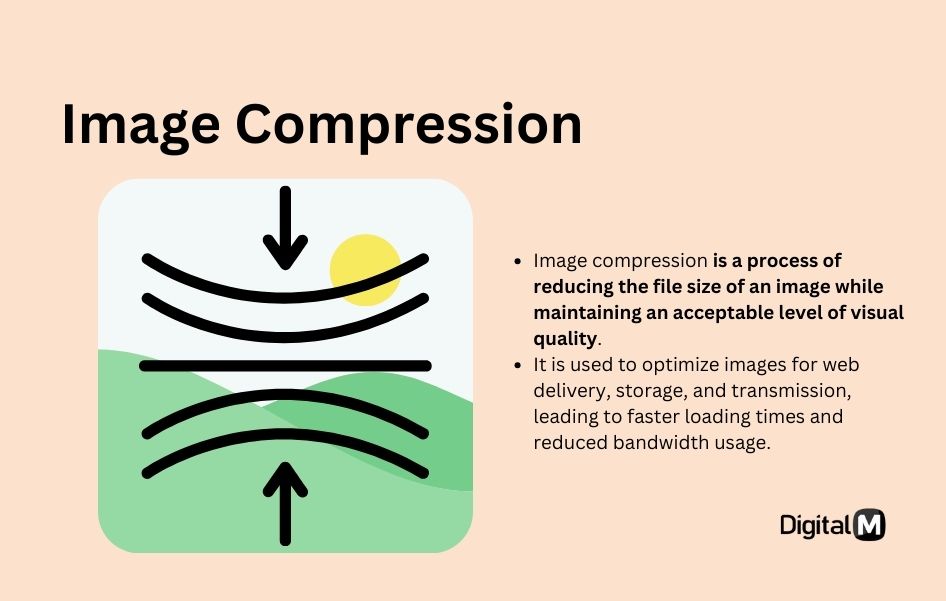Image compression
Image compression is a process of reducing the file size of an image while maintaining an acceptable level of visual quality. It is used to optimize images for web delivery, storage, and transmission, leading to faster loading times and reduced bandwidth usage.

Imagine you have a large photo, and you want to make the file size smaller without losing too much quality. That process is image compression. It helps websites load faster and saves storage space.
Key Points:
Reducing File Size: Image compression reduces the file size of an image by removing redundant or unnecessary data. This is crucial for optimizing web performance, especially for users with slower internet connections.
Lossy vs. Lossless: There are two main types of image compression—lossy and lossless. Lossy compression sacrifices some image quality to achieve higher compression ratios, while lossless compression maintains the original image quality but may have lower compression ratios.
Common Compression Formats: JPEG (Joint Photographic Experts Group) is a common format for lossy compression, suitable for photographs. PNG (Portable Network Graphics) and GIF (Graphics Interchange Format) are often used for lossless compression, suitable for images with transparency or simpler graphics.
Tools and Software: Various tools and software, both online and offline, allow users to compress images. These tools often provide options to control the level of compression and choose between lossy and lossless formats.
Why it Matters:
Faster Loading Times: Compressed images load faster on websites, improving the user experience.
Bandwidth Savings: Reduced file sizes save bandwidth, benefiting both website owners and users.
Storage Efficiency: Compressed images take up less storage space on servers and devices.
Example:
Imagine you have a high-resolution photograph that is several megabytes in size. By using image compression, you can reduce the file size significantly while maintaining a visually acceptable quality, making it more suitable for web use.
In summary, image compression is the process of reducing the file size of an image to optimize it for web delivery, storage, and transmission. It is crucial for improving website performance, reducing bandwidth usage, and efficiently managing storage space.
Looking for high quality free images to use on your website? Check out this article.

